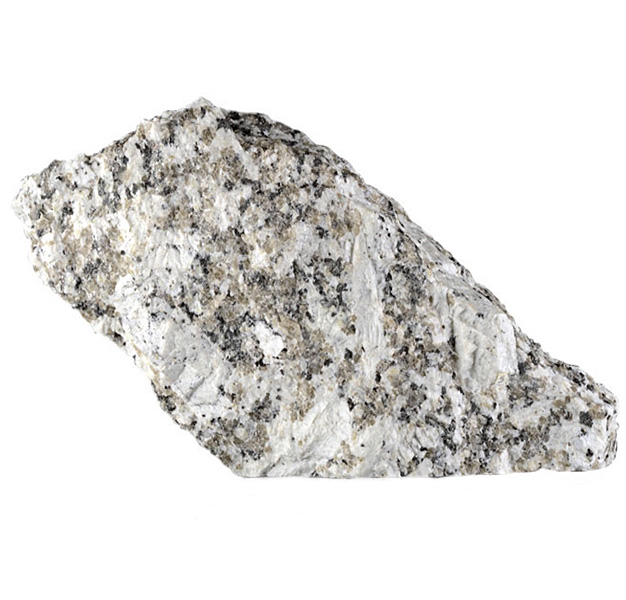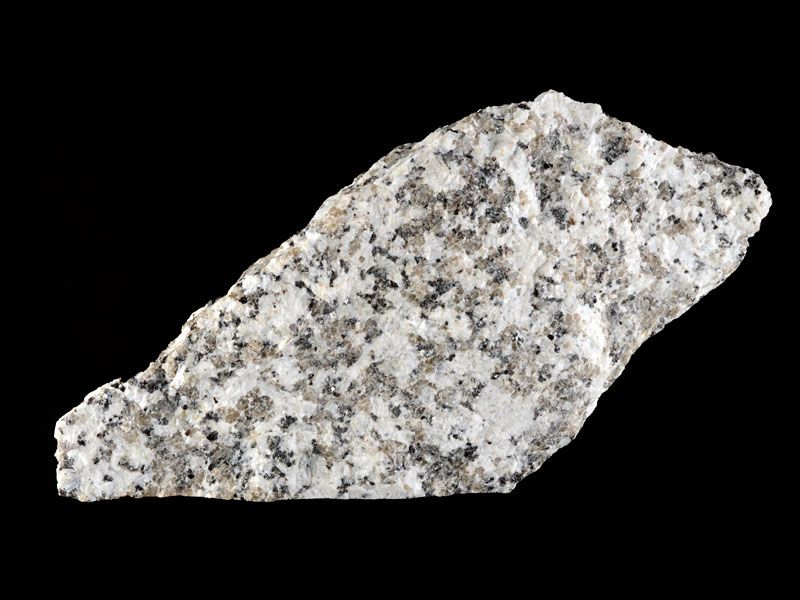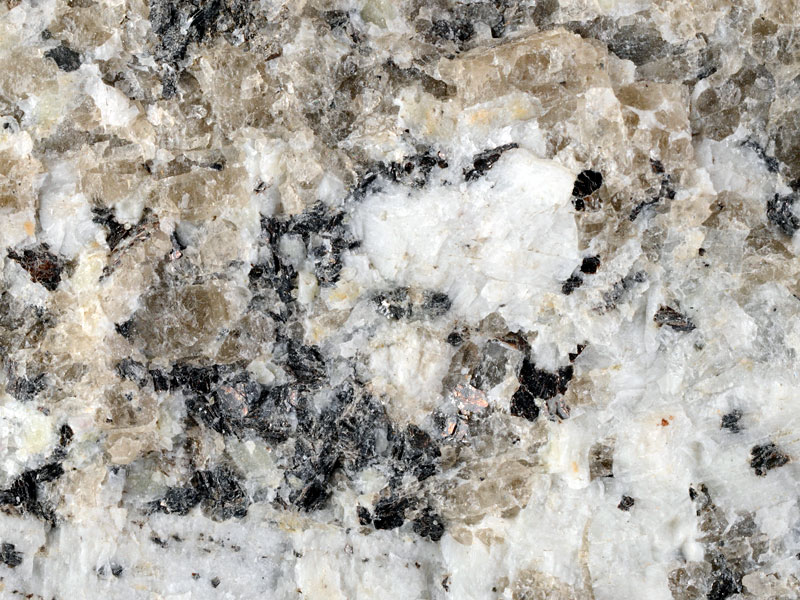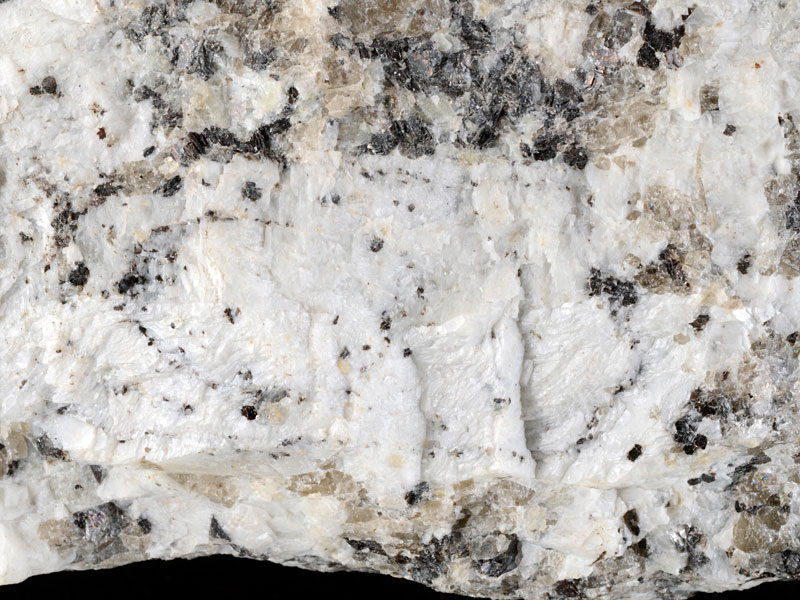
Fact sheet
This sample of granite comes from Luxulyan, St Austell, Cornwall. It is known locally as biotite granite, although the granite actually contains both muscovite and biotite. This granite represents part of the main mass of the St Austell granite, and it was this pluton that drove much of the heating and fluid infiltration of local rocks leading to intrusions and mineralisation. Adjacent mineral deposits and the large clay pits were also the result of the hydrothermal fluid circulation surrounding the SW England pluton during its intrusion in the Permian period.
The thin section contains large plates of biotite showing alteration to chlorite, with lesser amounts of equally sized muscovite. Large plates of quartz show little deformation, orthoclase and plagioclase feldspar are both altered, plagioclase exhibits compositional zoning and orthoclase exhibits coarse perthite textures.
The United Kingdom Virtual Microscope (UKVM) collection consists of igneous, sedimentary and metamorphic rocks from around the UK.
It is intended as a teaching resource, helping to tell the story of the common rock types and how they form, and reflecting the history of the UK at the margins of the continent of Europe. The collection is a series of teaching sets, for example igneous rocks from the North Atlantic Igneous Province and SW England; high-temperature metamorphic rocks from Scotland and low-temperature metamorphic rocks from Wales; and sedimentary rocks, including English limestones and sandstones.









